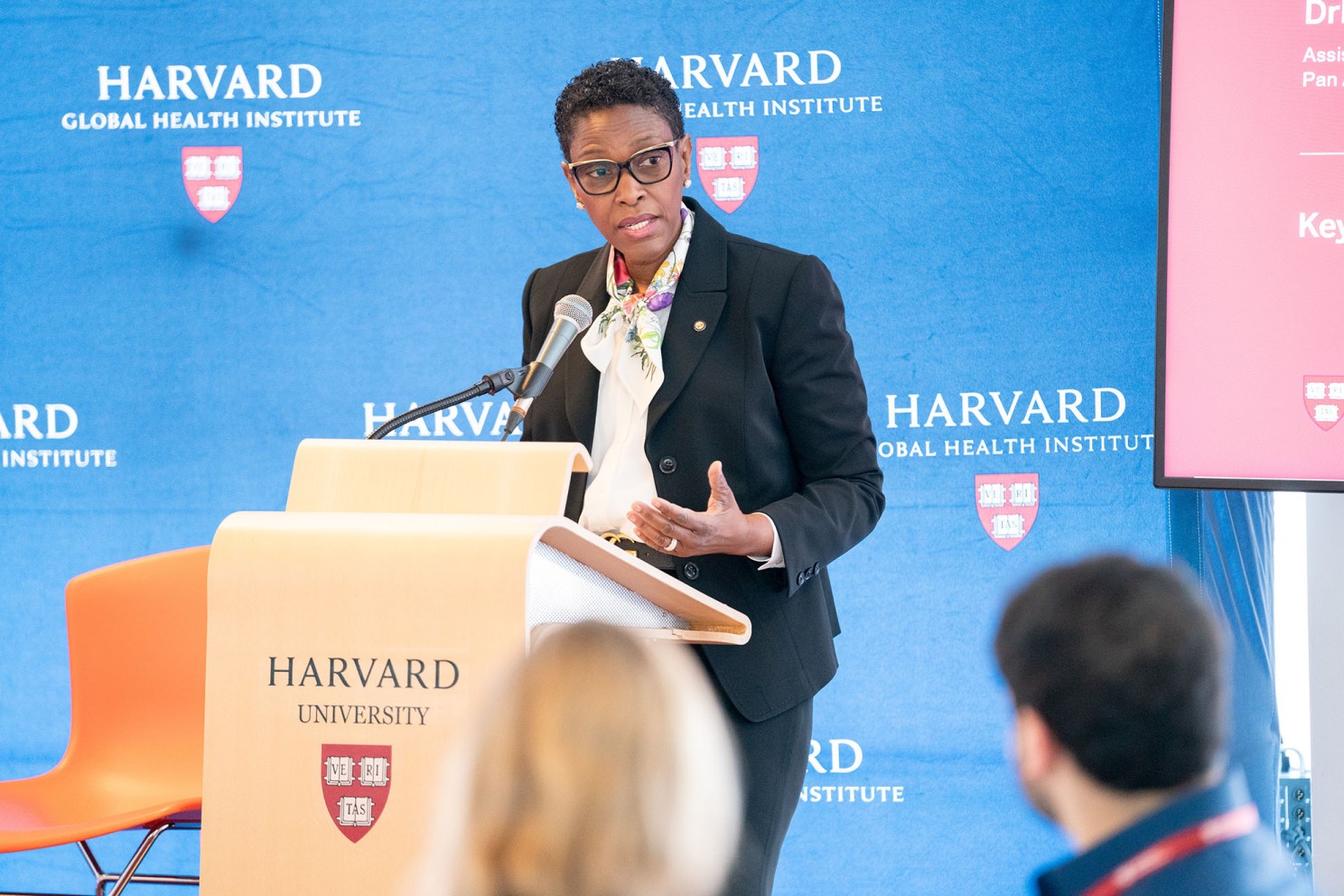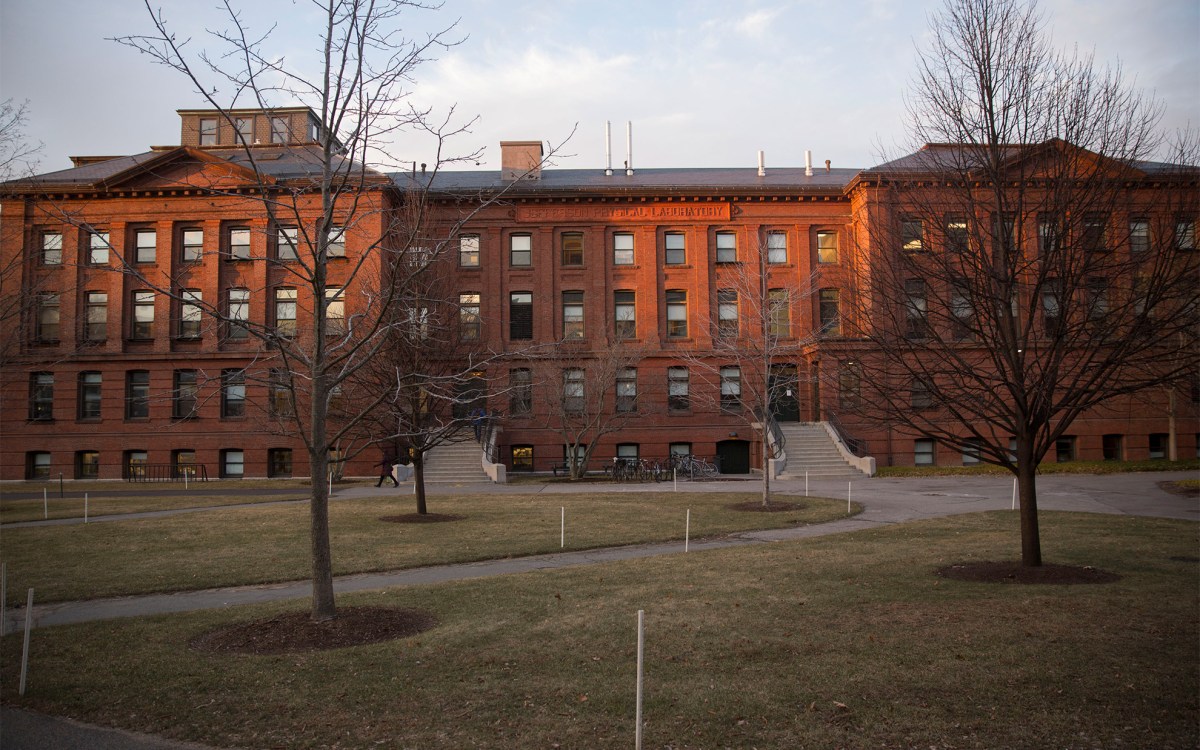Experts agree inequities in global health persist despite leaps in medical advancement

2025 Global Health Symposium Keynote Speaker Rhonda Sealy-Thomas
Photo by Bryce Vickmark
Global health experts from across Harvard University and around the world gathered at the 2025 Global Health Symposium on April 10 to address some of the most critical issues in global health. Organized by the Harvard Global Health Institute, the full-day symposium featured a keynote address by Rhonda Sealy-Thomas, assistant director, Pan American Health Organization (PAHO), United Nations, and panel discussions around the theme of Delivering on the Promise of Health Equity. Throughout the day, over 2,600 people from 115 countries joined the event via livestream.
Sealy-Thomas said public health professionals should see health equity not as an aspiration, but an obligation to ensure that every person, regardless of where they live, their socioeconomic status, age, race, ethnicity, gender, or disability, has an equal opportunity to achieve their highest standard of health.
Unfortunately, the reality is that despite remarkable advancements in health policy, medical breakthroughs, and technological innovations over the past decades, vast health disparities persist.
“For example, a child born in the region of the Americas — particularly in Latin America and the Caribbean — today is still significantly more likely to die before his or her fifth birthday than a child born in Norway. Moreover, the maternal mortality ratio in the region of the Americas is over five times higher than that in Europe,” said Sealy-Thomas.
Other experts at the symposium agreed.
In the panel “Displacement and Disparities: Navigating Health Challenges Amid Conflict,” Petra Khoury, global director of Health and Care at the International Federation of Red Cross and Red Crescent, suggested that the changing attitude toward global health and foreign aid had made it difficult to close the gap in health equity.
“There is a general attitude of ‘why do we need to support people outside our borders? We need to keep the money internally,’” said Khoury.
But it is not all doom and gloom. Salmaan Keshavjee, director of Harvard Medical School’s Center for Global Health Delivery said he saw “a glimmer of hope” and people are seeing that they need to rise to the occasion. He said when people value the sanctity of life, it opens up new opportunities.
In another panel, “Impact and Influence: Examining the U.S. Role in Global Health,” Sheila Tlou, co-chair of the Global HIV Prevention Coalition and special ambassador of the African Leaders Malaria Alliance, reminded the audience that “fair access to healthcare is a political choice.”
She believed global health equity is for the future of humanity. A new approach to humanitarian aid is one of the new opportunities that opened up in the current political climate.
“No country is safe until all countries are safe. We (African countries) need that global solidarity and shared responsibility to continue, but we have to put in our bits so that we continue as partners, not as recipients.”
In a conversation with Carole Mitnick, professor of Global Health & Social Medicine at Harvard Medical School, New York Times bestselling author and philanthropist John Green said tuberculosis is an exemplary case of health injustice, although it is not the only one.
“If you map poverty in my hometown of Indianapolis and you map cancer rates in my hometown of Indianapolis, it’s the same map.” Green said.
In the case of tuberculosis, Green said the fact that a disease that has been curable since 1956 is still killing someone in the year 2025 is not a failure of science, but a failure of human systems.





